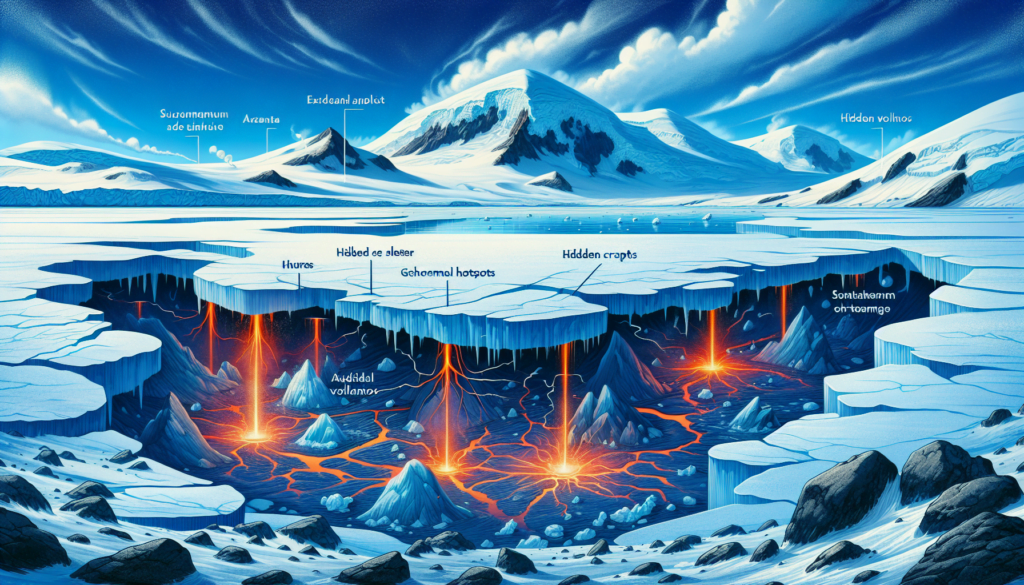Antarctica, the frozen continent at the southernmost part of our globe, is often visualized as a vast and desolate land of ice. Yet, beneath its icy exterior lies a remarkable and little-known feature: active geothermal hotspots and volcanoes. This article will explore the intriguing phenomenon of Antarctica’s geothermal activity, shedding light on volcanoes hidden under the ice.
A Hidden Volcanic Landscape
The idea of volcanoes in Antarctica might seem outlandish to many, but the continent’s geological activity is very real. The Transantarctic Mountains and West Antarctic Rift System harbor numerous volcanic structures, some of which have been active in the relatively recent geological past. These volcanoes, like Mount Erebus, are capable of influencing ice dynamics and local ecosystems.
The West Antarctic Rift System
A significant hub of geothermal activity in Antarctica is found in the West Antarctic Rift System. This enormous geological feature, comparable to the East African Rift Valley, spans over 3,000 kilometers. It’s home to numerous geothermal hotspots and active volcanoes. Unlike more familiar volcanic activity, these formations are often obscured by ice sheets, making their study and observation challenging.
Mount Erebus: The Continent’s Most Active Volcano
Mount Erebus stands as the most well-known and active volcano in Antarctica. Located on Ross Island, it has been continuously active since its discovery in 1841 by Sir James Clark Ross. It holds the title of the southernmost active volcano in the world and features a persistent lava lake. Mount Erebus’s activity offers unique opportunities for scientific research, providing insights into volcanic processes under extreme conditions.
Volcanic Heat and Ice Dynamics
The geothermal heat emanating from volcanoes under Antarctica’s ice sheets plays a crucial role in the dynamics of the ice itself. The heat can cause localized melting, forming subglacial lakes and influencing the flow and stability of ice streams. Researchers have identified nearly 100 subglacial lakes in Antarctica, with geothermal heat being a key factor in their formation and maintenance.
Implications for Climate Change Research
Understanding Antarctica’s geothermal hotspots is vital for climate change research. The heat from these volcanic formations can affect the melting rates of ice sheets, which has direct implications for global sea levels. As scientists strive to predict future climate scenarios, comprehending the contributions of geothermal heat becomes increasingly important.
Conclusion: Unveiling the Secrets Beneath the Ice
Antarctica’s geothermal hotspots and hidden volcanoes present a fascinating and critical aspect of the continent’s complex geology. As research continues and technology advances, scientists are uncovering more about these subterranean features. Their discoveries are not only reshaping our understanding of Antarctica’s geological history but also informing broader environmental and climate studies.
In a land dominated by ice and cold, the warm breath of volcanoes beneath the surface adds a surprising and vital dimension to the story of Antarctica. These geothermal hotspots remind us that even in the most unlikely places, Earth’s dynamic and powerful forces are always at work.

